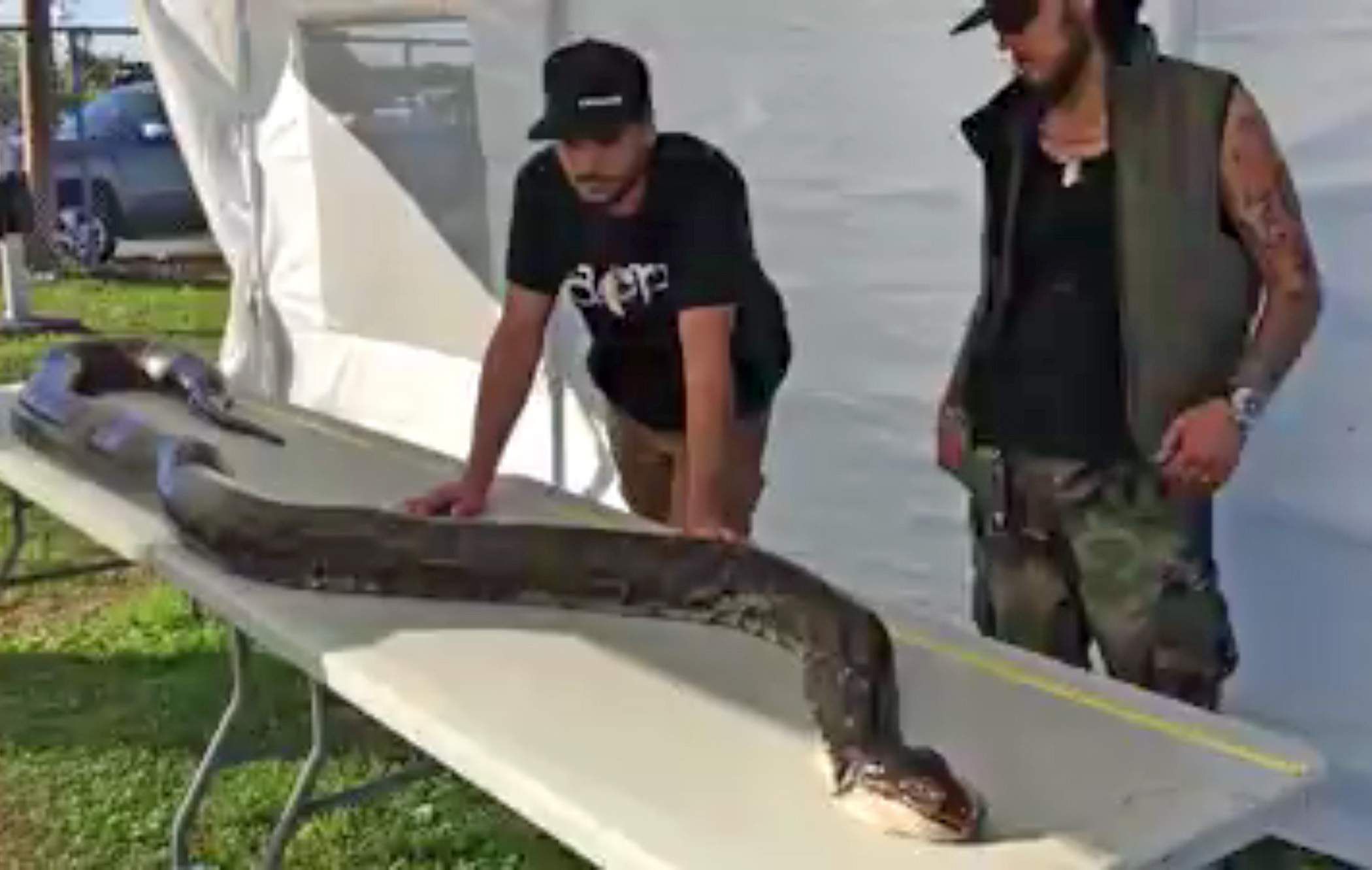Burmese pythons are one of the largest snakes in the world, and they have become a popular pet among reptile enthusiasts. However, while these snakes may seem indestructible, there are actually several factors that can lead to their demise.
From disease and parasites to habitat loss and human interference, there are many threats that can kill a Burmese python. In this article, we will explore some of the most common dangers these snakes face and what can be done to protect them in the wild and in captivity. So, let’s dive in and discover the fragile side of these fascinating creatures.
A Burmese Python can be killed by a variety of factors such as disease, parasites, predators, and environmental changes. In their native habitat, their natural predators include large birds of prey, crocodiles, and other large snakes. In areas where they have been introduced, humans can also pose a threat to their survival. In some cases, hunting and removal programs have been initiated to control the population of Burmese Pythons in certain areas.

What Can Kill a Burmese Python?
Burmese pythons are one of the largest species of snakes in the world, and they are native to Southeast Asia. In recent years, they have become a popular pet in the United States, but they are also considered an invasive species because they can grow so large and become a threat to native wildlife. While these snakes are incredibly resilient and can survive in a variety of environments, there are a few things that can kill them.
1. Extreme Temperatures
Burmese pythons are cold-blooded, which means they rely on their environment to regulate their body temperature. If they are exposed to extreme temperatures, either hot or cold, they can become lethargic, and their internal organs can begin to shut down. In the wild, Burmese pythons will seek out shade or sun to regulate their temperature, but in captivity, it’s essential to provide them with an appropriate temperature gradient.
It’s also important to note that Burmese pythons are sensitive to changes in temperature, so sudden drops or increases can be stressful for them. If you’re keeping a Burmese python as a pet, make sure to monitor the temperature in their enclosure regularly.
2. Disease and Parasites
Like all animals, Burmese pythons are susceptible to disease and parasites. In captivity, they can pick up parasites from contaminated food or water, and they can also develop respiratory infections if their enclosure is not kept clean and dry.
In the wild, Burmese pythons are also at risk of contracting diseases from other animals they come into contact with. For example, there have been cases of Burmese pythons in the Everglades contracting a virus from raccoons that has caused neurological damage.
3. Predators
Burmese pythons are apex predators, which means they are at the top of the food chain in their natural habitat. However, they are not invincible, and they can fall prey to larger animals like alligators or crocodiles. In captivity, Burmese pythons are not at risk of being hunted by predators, but they can be injured or killed by other animals if they are housed together.
4. Lack of Food or Water
Burmese pythons can go several weeks without food, but they need access to water at all times. If a Burmese python is deprived of water for an extended period, they can become dehydrated, and their organs can begin to shut down. In captivity, it’s important to provide your snake with a clean source of water at all times, and to make sure they are being fed an appropriate diet.
5. Injury or Trauma
Burmese pythons are incredibly resilient, but they can still be injured or traumatized. In the wild, they can suffer injuries from fighting with other animals or getting caught in traps. In captivity, they can be injured if they are mishandled or if their enclosure is not set up correctly. If a Burmese python is injured, it’s essential to seek veterinary care as soon as possible to prevent further complications.
6. Toxic Substances
Burmese pythons are not immune to toxic substances, and exposure to chemicals or other toxins can be deadly. In the wild, they can be exposed to pesticides or other chemicals used in agriculture. In captivity, they can be exposed to toxins in their environment, such as cleaning products or other chemicals. If you’re keeping a Burmese python as a pet, make sure to keep their enclosure clean and free of any potentially harmful substances.
7. Stress
Like all animals, Burmese pythons can experience stress, which can have a negative impact on their health. In captivity, they can become stressed if their enclosure is not set up correctly, or if they are not being handled properly. In the wild, they can become stressed if they are exposed to loud noises or other disturbances. If you’re keeping a Burmese python as a pet, make sure to provide them with a comfortable and stress-free environment.
8. Age
Burmese pythons can live for several decades in captivity, but they have a shorter lifespan in the wild. As they age, they become more susceptible to disease and organ failure. In captivity, it’s important to provide your snake with appropriate veterinary care as they age, and to monitor their health closely.
9. Lack of Oxygen
Burmese pythons are adapted to living in low-oxygen environments, but they still need access to air. If they are deprived of oxygen for an extended period, they can suffocate. In captivity, it’s important to make sure your snake’s enclosure has adequate ventilation, and to avoid overcrowding.
10. Invasive Species
Burmese pythons are considered an invasive species in many parts of the world, including the Everglades in Florida. They have a negative impact on native wildlife, and they can also compete with other predators for food. In some cases, Burmese pythons have even been known to prey on endangered species. Controlling the population of Burmese pythons is essential to protect the ecosystem and prevent further damage.
In conclusion, while Burmese pythons are incredibly resilient, there are still several things that can kill them. As a responsible pet owner or conservationist, it’s important to understand the risks and take steps to prevent them. By providing your snake with a comfortable and stress-free environment, monitoring their health closely, and taking appropriate measures to control their population, you can help ensure that Burmese pythons thrive in their native habitat and coexist peacefully with other animals.
Frequently Asked Questions
Here are some common questions about what can kill a Burmese Python:
What are the natural predators of Burmese Pythons?
Burmese Pythons have very few natural predators in their native habitat in Southeast Asia. However, they are sometimes preyed upon by large birds of prey, such as eagles and hawks. In addition, young pythons may be eaten by other snakes and small mammals.
However, in Florida where Burmese Pythons have become an invasive species, they have fewer natural predators. Some animals that may prey on them include alligators, crocodiles, and large birds like the Everglades kite.
Can cold weather kill a Burmese Python?
Yes, cold weather can definitely kill Burmese Pythons. These snakes are cold-blooded, which means they rely on external sources of heat to regulate their body temperature. If temperatures drop too low, a python may become lethargic and unable to hunt for food. If temperatures remain low for an extended period of time, the snake may die from hypothermia.
In Florida, where Burmese Pythons have become established, cold snaps have helped to control their populations. However, pythons that are able to find warm refuges, such as underground burrows, may survive even during cold weather.
What diseases can kill Burmese Pythons?
Burmese Pythons are susceptible to a number of diseases that can be fatal. One of the most common is inclusion body disease (IBD), which is caused by a virus that attacks the snake’s central nervous system. Symptoms of IBD include neurological problems, difficulty shedding, and loss of appetite.
In addition to IBD, Burmese Pythons can also be affected by respiratory infections, mouth rot, and parasites. Proper husbandry and regular veterinary care can help to prevent these diseases and keep your python healthy.
Can humans kill Burmese Pythons?
Yes, humans can and do kill Burmese Pythons, both intentionally and unintentionally. In Florida, where the snakes are an invasive species, wildlife officials encourage people to report sightings and remove pythons from the wild. Pythons may also be killed for their skin, which is used to make leather products.
However, it’s important to note that Burmese Pythons are not aggressive towards humans and will typically only attack if they feel threatened or cornered. If you encounter a python in the wild, it’s best to keep your distance and call a wildlife expert for help.
What other factors can kill Burmese Pythons?
In addition to natural predators, cold weather, and disease, Burmese Pythons can be killed by a variety of other factors. These include habitat destruction, pollution, and human encroachment on their territory. In Florida, for example, many pythons are killed by cars as they attempt to cross roads.
For captive pythons, inadequate housing and improper diet can also be fatal. Burmese Pythons require a large enclosure with appropriate temperature and humidity levels, as well as a varied diet of appropriately sized prey items.
Why don’t they just shoot the Pythons in Florida?
In conclusion, while Burmese pythons are known for their strength and resilience, there are several factors that can lead to their demise. One of the most significant threats to these snakes is habitat destruction, which can result in loss of food and shelter. Additionally, hunting and poaching have led to a decline in their population, as well as the spread of diseases and parasites.
Another factor that can kill a Burmese python is competition with other invasive species, such as the Nile monitor lizard. These lizards are known to prey on Burmese pythons and can outcompete them for resources. Finally, climate change and extreme weather events can also have a negative impact on these snakes, as they are adapted to a specific set of environmental conditions.
Overall, it is important to understand the complex factors that can threaten the survival of Burmese pythons, as well as other species in their ecosystem. By working to protect their habitats, regulate hunting and poaching, and control invasive species, we can help ensure that these magnificent snakes continue to thrive in the wild for generations to come.


